
Chicken vs Beef: Which Has More Protein?
Everyone’s talking about protein — in food and fitness — and it’s easy to see why. Muscle growth, tissue repair, and the production of hormones and enzymes all depend on it. Whether you’re watching macros, aiming for lean muscle, or just trying to eat more consciously, knowing where your protein comes from matters.
Among the many options available, two types of meat tend to lead the conversation: chicken and beef. But when it comes to protein per serving, which one truly comes out on top?
This breakdown will walk you through the nutritional details, popular cuts, and practical takeaways to help you decide which is the better protein fit for your needs.
Protein Content in Chicken vs Beef: The Basics
When comparing beef vs chicken, one of the first things people want to know is how much protein is actually in each. The truth is, both are excellent sources of high-quality protein, but their exact content depends on the cut and how it’s cooked.
- Skinless cooked chicken breast contains around 31g of protein per 100g.
- Lean cooked beef, like top sirloin steak, typically contains about 26g of protein per 100g.
- Minced chicken ranges from 23–27g depending on fat content.
- Lean minced beef sits around 25–27g, while fattier blends offer less protein per gram.
So while chicken protein content tends to be slightly higher in very lean cuts, beef generally provides more nutrients beyond protein. The best choice often comes down to personal preference, dietary goals, and cooking methods.
Comparing Popular Cuts: Chicken Breasts, Legs, and Whole Chicken

When assessing chicken or beef for protein, it helps to look beyond averages and into real-world eating habits. Each cut offers something different.
Chicken Breasts
Often featured in high-protein diets, chicken breasts are the go-to for lean meat lovers. When cooked, a skinless chicken breast delivers maximum protein with minimal saturated fat. This makes it ideal for muscle building and weight loss, as well as for anyone keeping an eye on overall nutritional content.
From meal prepping to barbecuing, organic chicken breasts offer consistent results and are widely recognised as one of the most protein-dense meats available.
Chicken Legs
While the chicken leg offers slightly less protein than the breast, it’s rich in flavour and contains more fat, making it great for roasting or braising. The thigh portion delivers succulent, tender meat that pairs beautifully with a wide range of spices.
Buying organic chicken legs ensures you’re getting chicken raised in a stress-free environment, free from routine antibiotics. While they may not provide the leanest protein source, they do bring versatility and richness to the table.
Whole Chicken
An organic whole chicken offers the best of both worlds. You’ll get protein from a mix of white and dark meat and bones to make nourishing chicken broth. It’s also a cost-effective way to feed a family while ensuring nothing goes to waste.
Roast it on a Sunday or break it down for several meals; either way, whole chickens are ideal for those who enjoy variety, flavour, and home-style cooking.
Comparing Popular Cuts: Beef Steaks, Mince, and Burgers

Beef consumption has remained strong for centuries, and beef is certainly no slouch when it comes to high-quality protein. The protein content does vary by cut and fat level, but it also brings along key nutrients like iron, zinc, and B12.
Traditional Steaks
Cuts like top sirloin steak, ribeye, and rump are protein-rich and satisfying. A 100g portion of top sirloin steak typically offers around 26g of protein. These steaks are often chosen for their texture and flavour, though they can range in fat content depending on the marbling.
Choosing leaner steaks is a smart way to get more protein without excess saturated fat. If you’re looking to buy organic beef, it’s worth selecting cuts that are trimmed and responsibly aged for maximum tenderness and flavour.
Beef Mince
Lean beef mince provides excellent protein and is extremely versatile. Use it in everything from chilli to stuffed peppers or shepherd’s pie. When cooked, you’ll get about 25g of protein per 100g, and even more if you’re using a lean blend. This option’s great for feeding a large family because it stretches across several meals while keeping all its nutritional value.
Beef Burgers
Burgers might not be the first thing that comes to mind when thinking about a high-protein diet, but well-made organic beef burgers can actually be a great source of lean meat. Choose patties made with minimal fillers and a high meat percentage. Barbecued or pan-fried, they provide all the protein benefits of beef mince while still feeling like a treat.
Bioavailability: Which Protein Is Easier to Absorb?
Both chicken and beef contain complete proteins, which deliver all nine essential amino acids needed for muscle repair and metabolic function.
Studies suggest that beef and chicken are fairly equal in terms of bioavailability, though chicken may be digested slightly faster due to its lower fat content and muscle density. That said, beef and chicken both support muscle recovery, satiety, and hormone health effectively.
When choosing based on bioavailability, the key isn’t which meat you choose, but the quality — look for high-quality, well-cooked meat with a complete amino acid profile.
Nutritional Profile Beyond Protein: What Else Matters?
While protein intake is important, it’s not the only consideration when choosing between chicken and beef. The overall nutritional content varies:
- Chicken meat (especially white meat) is lower in calories and saturated fat, making it a better option for heart health and low-fat diets.
- Beef generally contains higher amounts of iron, vitamin B12, and zinc, which are essential vitamins for energy production and immune function.
- Lean beef offers more creatine and carnosine, two compounds known to support physical performance and brain health.
Both have their place in a balanced diet, and the right choice often depends on individual nutrient needs and taste preferences.
What About Organic? Quality Protein Starts with Quality Meat
How the meat is raised plays a role in its taste and nutrition. Choosing to buy organic meat online or from a local organic farm shop means prioritising higher welfare standards, traceability, and fewer contaminants. For example:
- Organic chicken in the UK follows certain standards that prohibit routine antibiotic use and require outdoor access.
- Organic chicken breasts and organic chicken legs come from birds raised on a natural diet, which often results in better texture and flavour.
- When you buy organic beef, you’re supporting slower, more sustainable beef production, which often yields lean beef with better marbling and deeper flavour.
Organic meat is often richer in essential vitamins, too, thanks to pasture-based diets and lower stress levels in the animals.
Cooking and Preparation: Does It Affect Protein Content?
The short answer is yes, but not dramatically. How you cook your meat can slightly affect protein, but the loss is usually minimal compared to the impact on fat and moisture.
For example, high-heat barbecuing can cause shrinkage and moisture loss, slightly concentrating the protein per gram. Boiling or stewing may cause a small loss of amino acids into the cooking liquid, though that can be recovered by using it as a base for sauces or chicken broth.
What really affects the nutritional outcome is how you cook, particularly if added fats or sauces are involved. Cooking lean cuts simply is the best way to preserve protein integrity and support a healthy plate.
What are Some Healthy Ways to Cook Chicken and Beef?
For chicken and beef, cooking methods that retain nutrients without adding unnecessary fat include:
- Barbecuing: Best for steaks and chicken breasts. Adds flavour while letting fat drip away.
- Baking or roasting: Ideal for a whole chicken, chicken legs, or top sirloin steak.
- Poaching or boiling: Great for shredded chicken breast or for making broth.
- Slow cooking: Perfect for tougher beef cuts or bone-in chicken pieces. It retains nutrients while breaking down connective tissue for tender results.
If you want to get the most nutritional benefit from your chicken or beef, avoid deep frying or smothering it in heavy sauces.
Choosing the Right Meat for Your Goals

So, which should you choose: chicken or beef? That depends on what you’re aiming for. Below, we break it down by lifestyle and dietary priorities to help you decide which meat earns a regular spot on your plate.
High-Protein Diets
If you’re following a high-protein diet, the most efficient option is skinless cooked chicken breast. It offers more protein per calorie than nearly any other cut — around 31 grams of protein per 100 grams with minimal fat and only about 165 calories. It’s also incredibly versatile — barbecue, roast, poach, or shred it into salads, wraps, and bowls. Skinless chicken breast is easy to portion and plan around for those tracking macros or aiming to hit a specific protein intake target.
That said, lean cooked beef, especially cuts like top sirloin or lean minced beef, can also serve as a strong option. While slightly higher in calories, it still delivers excellent protein along with additional nutrients. Both meats can play a role in a high-protein eating pattern, depending on taste preferences and how much variety you like in your weekly meals.
Muscle Building
When your goal is muscle growth and recovery, quality and quantity both matter. Chicken and beef are both complete proteins, meaning they contain all nine essential amino acids required for muscle repair and synthesis. Chicken breast offers fast-digesting, low-fat protein that’s perfect for post-workout meals. Many athletes pair it with complex carbs like sweet potatoes or rice for a balanced recovery plate.
For serious muscle growth, don’t forget lean beef. Its nutritional profile supports muscle development, and its high-protein content contributes to achieving your daily protein requirements. Lean beef is also higher in iron and zinc, which support blood health and immune function, both of which are essential when training hard.
Weight Loss
Protein is a crucial ally for anyone aiming to lose weight. It promotes satiety, helps preserve lean muscle mass during calorie restriction, and boosts metabolism through the thermogenic effect of food. Chicken breast, especially when barbecued or poached, is a go-to option. It’s low in calories and high in protein, making it ideal for staying full without overeating.
Chicken mince is another smart choice for weeknight meals or recipes like lettuce wraps and stir-fries. It absorbs flavour well and adapts to many cuisines. For those who prefer red meat, lean beef can still fit into a weight loss plan. Just opt for lean minced beef or smaller cuts like rump or sirloin, and keep an eye on cooking methods to avoid added fats.
Budget or Portion Control
Stretching your meals without compromising on nutrition often comes down to choosing the right cuts. An organic whole chicken provides excellent value, allowing you to roast once and enjoy multiple meals from it. Leftovers can be turned into sandwiches, salads, soups, or tacos, making it a practical option for households looking to eat well without constant shopping.
Beef mince is another strong option. It’s affordable, freezes well, and can be used in a wide range of dishes, from shepherd’s pie to meatballs. Portioning it into 100-gram servings makes meal prep easy and ensures you’re keeping protein consistent across the week. Whether you’re cooking for one or feeding a family, both chicken and beef offer solutions that work for your schedule and budget.
Family Cooking vs Fitness Meals
Family-style meals often call for variety, flavour, and comfort, qualities both chicken and beef deliver easily. Chicken legs are ideal for tray bakes, stews, and barbecues where tender, richly flavoured meat is welcome. Likewise, beef burgers or beef and chicken curries are crowd-pleasers that can be made in batches and adapted to suit different palates.
On the other hand, if your focus is fitness-oriented meals, simplicity and control over ingredients become more important. Barbecued chicken breasts, lean cooked beef strips, and carefully portioned meals allow you to stay on track with minimal fuss. Having a mix of go-to recipes — some designed for family nights, others for focused nutrition — means you can enjoy balance without overcomplicating your routine.
Choose the Protein That Suits Your Plate
Both chicken and beef are powerhouses when it comes to protein. The best choice depends on your goals, preferences, and cooking style. Whether you lean toward tender white meat or a richly marbled steak, knowing what each cut offers makes every meal more intentional and more enjoyable.
At Rhug Estate, we offer a carefully selected range of premium organic meats, raised to the highest standards of quality and care. Explore our collection today to find the cut that fits your plate perfectly.


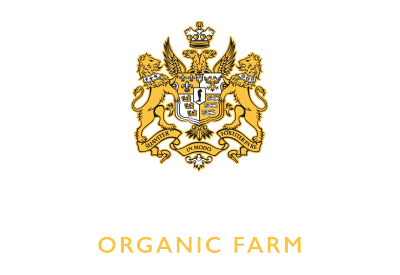

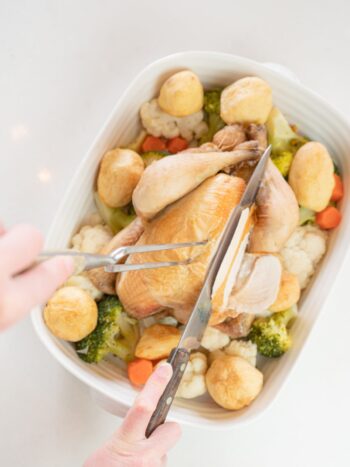
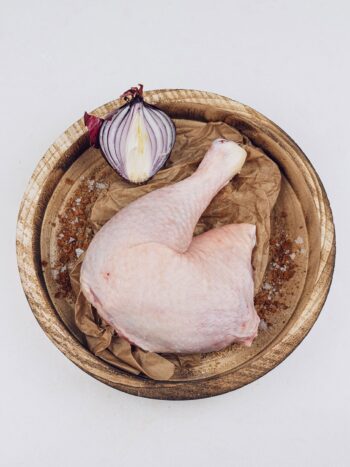


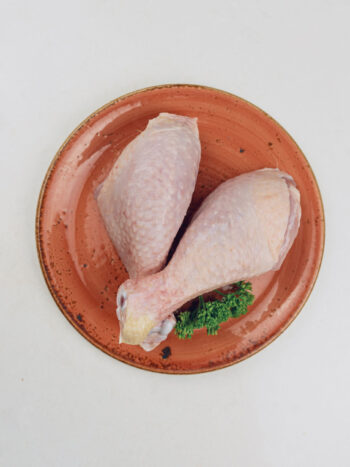
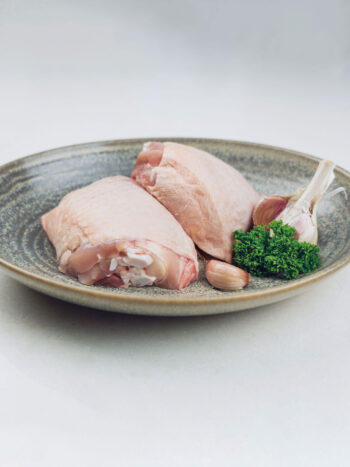

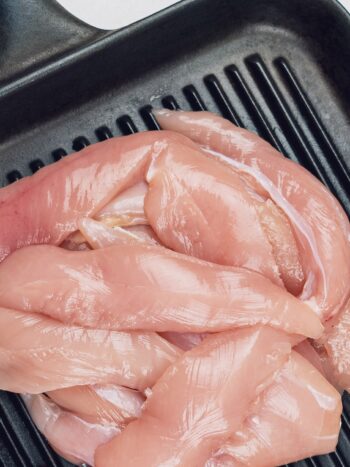



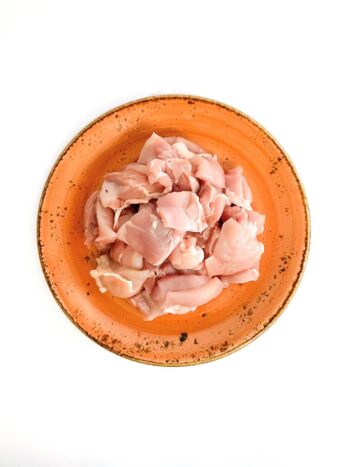
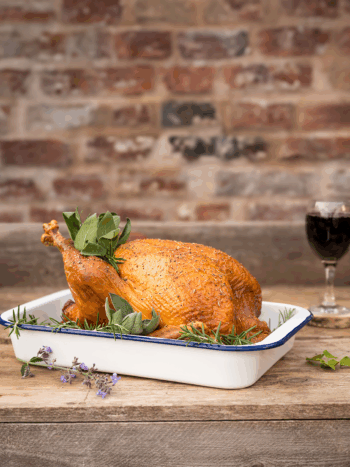



 Organic Beef
Organic Beef